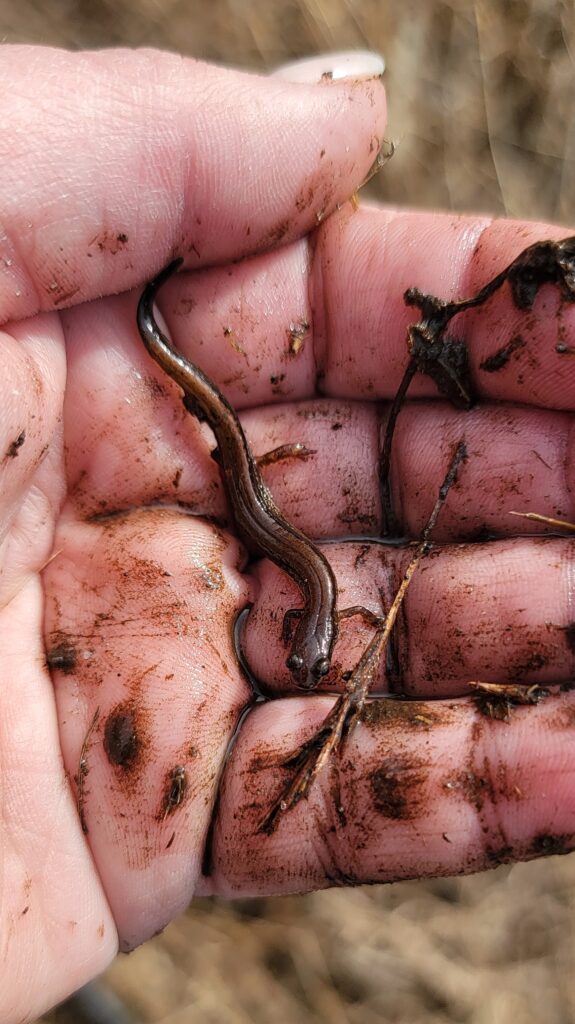Dwarf Salamander (Eurycea quadridigitata)

Photos by Amanda Hurst unless otherwise noted
Description: The dwarf salamander is aptly named, as it is one of the smallest vertebrates in North America. Full-grown adults frequently weigh less than one gram and may be less than 2 inches long from snout to tail tip. Superficially, the dwarf salamander may look like a tiny southern two-lined salamander, but there is one sure character for diagnosis: The dwarf salamander has only four toes on each of its back feet, whereas all other Eurycea have five (as do most other salamanders). Recent genetic and morphological studies have revealed that there may be as many as four species of dwarf salamanders. One species is bronze-brown colored while the other is yellow. Dwarf salamanders inhabit the edges of Carolina bays, migrating to the bays in spring (in some permanent bays) or fall (for more temporary bays) in order to breed. Larval development is completed in the bays in five to six months. Males mature at less than one year of age, but females take twice as long to reach first reproduction.
